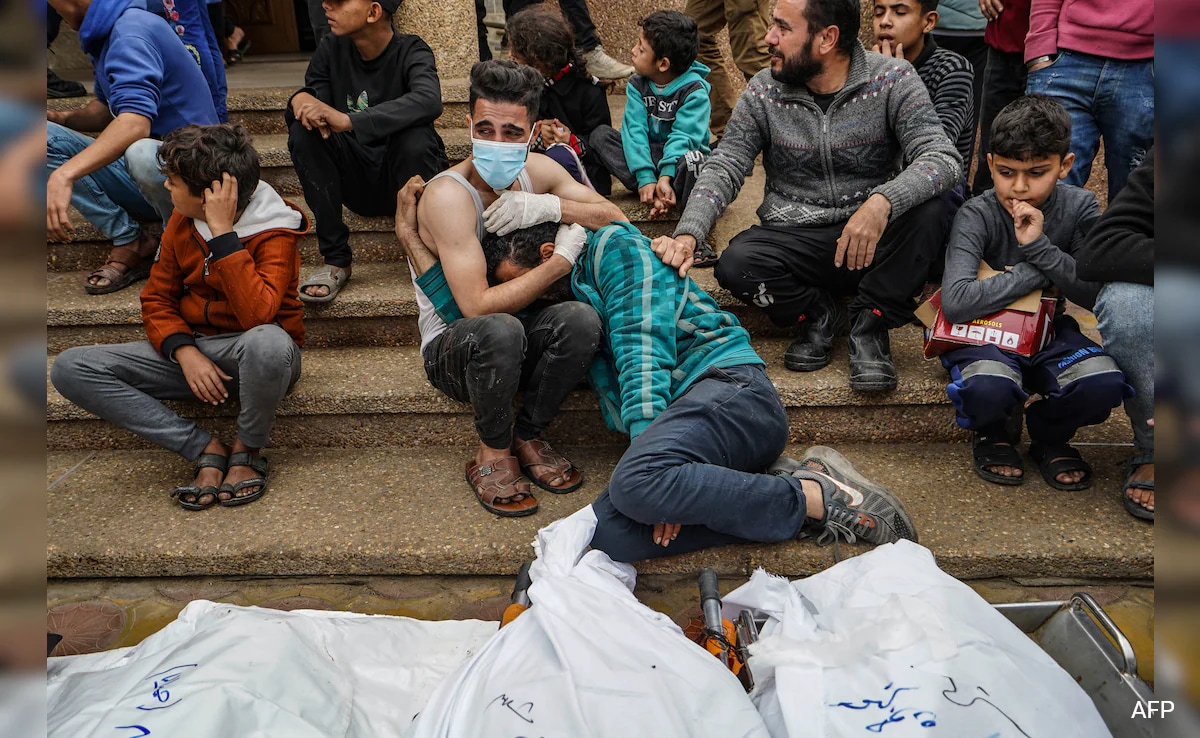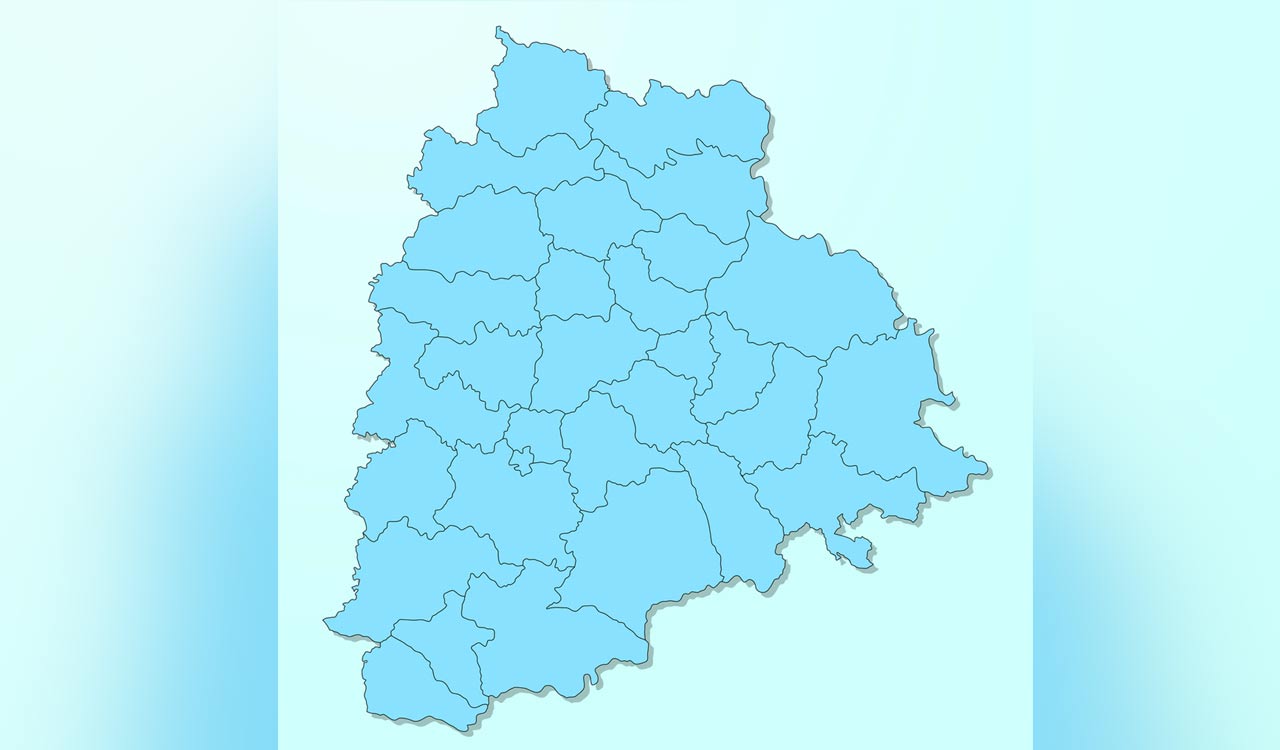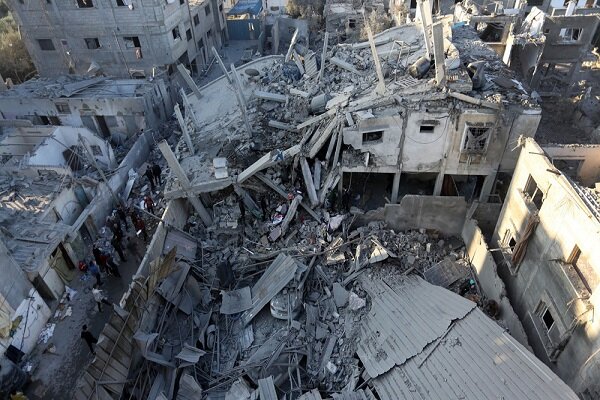By Aymun Moosavi
The Al-Aqsa Storm Operation (also known as Al-Aqsa Flood) has done more than cement the new equation in Palestine. It is actively contributing to shaping the region’s new face in a multipolar world. It is symbolic of the declining influence of the US in West Asia.
Each resistance group within the Axis of Resistance currently involved in the resistance against the Israeli regime has been preparing for a change to the status quo which has traditionally propelled US interests in the region, providing them with the upper hand.
The Axis of Resistance has long understood the functional role of the Israeli entity as a military outpost to fight wars on behalf of the US, acting as their disciplinary stick to ensure that surrounding states fall in line with their political and economic interests.
This context is often ignored but is what has come to shape the Axis’ primary goal, which is to ensure that the security of the region belongs to its people and is free from US hegemony.
This would entail dismantling and eliminating the Zionist occupation, whose lifeline is sustained by and dependent on US imperialism.
This status quo has forced the region into a choice between accepting complete US hegemony or facing political and economic starvation. Seeing an end to US influence is therefore in the national interest of each resistance group in the Axis of Resistance in some way or another.
The Lebanese Resistance
The Lebanese Hezbollah resistance movement is fully aware that complete security in the country and the region is unlikely with the presence of the illegitimate entity at its borders.
This is not because the Lebanese resistance is unable to protect itself from the Zionist entity as it has proven during its confrontation in the 1980s, 2000, and the victory of Lebanon in 2006, but because it needs to remain vigilant against the Zionist entity’s attempts at bringing violence to its soil, even though its threats are hollow in comparison to the resistance’s capacity to thwart it.
The resistance in Lebanon functions in a constant state of preparedness ready to counter such threats, as the sole factor preventing the reoccupation of Lebanon is the armed resistance, which has proven this to be a costly endeavor for the entity.
This was echoed by Hezbollah leader Sayyed Hassan Nasrallah in his long-awaited speech on Nov 3, when he said it is in the national interest of Lebanon to fight the entity and protect Gaza as if the Gazan resistance falls, Lebanon would be next.
This is because at the core of Zionism is an expansionist logic. Its slogan, “from the Nile to the Euphrates,” is a nod to the Greater Israel plan, which seeks to expand territory to include what they describe as their promised ‘imaginary’ Biblical land – this would put the whole region between Egypt and Iraq under threat.
If not deterred, the entity has openly threatened to occupy as much land as it possibly can.
What has been made clear in this confrontation, however, is that the resistance does not even consider the Zionist entity an independent threat, but merely an extension of US power, given that it has only found its strength through the political, financial, and military power granted to it by the US.
This was again highlighted during Nasrallah’s speech, where the Zionist entity was not even given a proper address. He dedicated a large portion of his speech to set out its conditions directly to the entity’s US sponsor:
“Your ships in the Mediterranean do not scare us. We have made preparations for them too. Your navy ships will pay the price. Remember your defeats in Lebanon, Iraq and Afghanistan. Remember your humiliating exit from Afghanistan.” – Sayyid Hassan Nasrallah
The US has faced numerous humiliating defeats in recent decades. Facilitating an end to the occupation entity through a Palestinian victory is therefore symbolic of the continuation of this process, as an end to US dominance across the region is a manifestation of the real power balance shift that according to Nasrallah, has been years in the making.
The US now has to rethink the nature of its presence in the region given the occupying Zionist entity’s failure to protect its interests.
Here, it must be emphasised that what has come to shape the region is not a Zionist vision of the region, but an American one. This is an important distinction to make because, for the first time, we are seeing the sponsor and the sponsored diverge over what this vision should entail.
The US wants a political solution to ensure the stability of its interests, while the Zionist entity wants to completely uproot Gaza and push them further into the Sinai, turning them all into refugees
When these differences become more apparent and the entity is simultaneously weakened through military confrontation, the US is left with no choice but to strategise a future plan that will account for the liability of the Israeli occupation exposed by its military failures, and suit the new shift in the balance of power in the region caused by the resistance.
The Israeli entity is now fighting for its survival, scrambling for ways to ensure US support for its own vision. We saw this in the recent assassination of Sayyid Razi Mousavi, a senior Iranian military advisor based in Syria, which was likely an attempt by the entity to expand the warfront by pulling in Iran, which would force the US to join in direct military action.
This would draw attention away from the Zionist entity’s genocide in Gaza by pulling them away from their front-facing position in the confrontation while diverting the fight to one between the US and Iran in a larger regional war.
Iraqi and Syrian resistance
For Iraq, US military presence never stopped after the 2003 war but continued in the form of illegal US military bases, sanctions, and control over the economy.
US strategy has been similar in Syria, with the establishment of bases like Al-Tanf soon after the Western-orchestrated civil war, which set out to sustain the illegal occupation of territory, the plundering of Syrian resources, and prevention of a strong and sovereign Syrian government, in order to dismantle the resistance axis and continue the creation of a ‘New Middle East’ that is aligned with the US, as was trialed in Egypt, Libya and Tunisia during the Arab Spring.
Though stationed on the pretext of ‘preventing terrorism’ from the very same Daesh that it initially nurtured and supported, the US’s ongoing presence is no more than an attempt to keep a foothold within a region that is strategically important for the control of global economies because of its access to the oil tap.
It is then no wonder why these bases have become frequent targets for the resistance in both countries during the current war. The Axis of Resistance recognizes that Zionist aggression is not localised or independent of its master, but rather part of the broader attempts of the US to ensure the status quo in the region which has traditionally offered them significant control within it.
This would make an end to Zionist aggression dependent on jeopardising US interests in the region – hence, attacking US bases.
To pressure the Zionist entity to stop its aggression in Gaza, the resistance needed to factor in the role the US plays at this level into its plans, which it has excelled in. It is the US that holds the cards here as once its interests are threatened it will have no choice but to move with the tide and tend towards the direction of ceasefire to protect its interests and presence in the region.
What is interesting is that it is not only the resistance’s efforts but the Israeli occupation’s delusions that are pushing the Americans towards this realisation.
The entity that was originally propelled to protect the status quo in the region on behalf of the US is jeopardising US interests, as in trying to level Gaza and the wider Palestinian resistance, it is going against US attempts to find a political solution that can allow the status quo to continue unchecked and has also forced the resistance on the offensive, making them a stronger opponent capable of tipping the status quo out of US favor.
Criticism over the wider resistance’s lack of a full-scale attack against the Zionist entity so far, and disregard for the significance of attacks on US bases is therefore indicative of a failure to understand the broader picture, which situates US presence in the region as the primary cause behind the aggressions of its illegitimate child.
Dismantling the illegitimate entity reflects a weakened US, which is essential for a de-Americanised West Asia, and the coming of a multipolar world; this is at the heart of the wider considerations of the regional parties assisting Al Aqsa Storm.
Ansarullah resistance movement
In a world monopolised by the US, Yemen’s Ansarullah resistance movement knows it will always face aggression, economic warfare, and find an enemy in Saudi Arabia, which has tried to ensure that its backyard is conducive to its own interests, making it essential that strategic points like the Bab Al Mandeb strait stay out of the hands of Ansarullah, who prioritise calls for Yemeni sovereignty and independence.
Ansarullah is also preparing for the establishment of a multipolar world, as they have first-hand experience of what this shift could bring. Despite almost a decade of war imposed on Yemen by Saudi Arabia which plunged the Arab country into one of the worst humanitarian crises of our time, it was this new multipolar world that finally paused the confrontation through the China-brokered deal between Iran and Saudi Arabia in March 2023, while the US watched.
For Ansarullah, Al Aqsa Storm has provided the space to set new terms of engagement across the wider region, which makes clear that any aggression from the US and its allies will be met with proportionate force, further highlighting how outdated US strategy here is.
Yemeni military has single-handedly posed the biggest threat to the economic functioning of the Israeli occupation, by forcing it out of the Red Sea, and further promising to stop the movement of ships to the occupied territories if the aggression against Gaza continues.
“The Americans have no right in the Red Sea… when you accept and acknowledge […] the legitimacy of the North Korean submarine or the modern Chinese aircraft carrier remaining near Florida in international waters, we will consider accepting the idea of the legitimacy of your presence in international waters.”– Mohammad Ali al-Houthi
In response to the Yemeni military’s actions, the US formed a multinational coalition in the Red Sea under the guise of ‘protecting’ international trade, which in reality was an attempt to protect the status quo in regional waters that have traditionally been in service of Western interests.
Much to the chagrin of hawks in Washington, the ten-nation alliance has failed to take off with many countries pulling out of it, acknowledging Yemen’s upper hand over them.
Yemeni military’s efforts have been noted for being highly sophisticated and precise, avoiding all non-Western vessels.
Major shipping companies have had to halt operations in the Red Sea, being forced to take new, longer routes, and the US has been scrambling to pressure Saudi to avoid a peace deal with Yemen while the issue continues.
Meanwhile, non-Western trade across the Red Se
a is flourishing, as non-Western tankers are reportedly transiting at a higher rate than average.
In just a few weeks, Yemen has set a new equation with global consequences and has pushed the US from a position of dominance to one of defense, having to react and succumb to the resistance’s demands, even while resisting power shifts in the region.
The words and actions of Yemen (Ansarallah) have made it clear that to view the resistance’s operations simply as a fight against Israel is to minimise the significance of the Al Aqsa Storm and to fail to fully grasp the reality of the entity, which is that it is completely dependent on Western backing to survive.
An attack on the entity should therefore be viewed as a broader attack on its American masters. Yemen has highlighted this by not only stopping Israel-linked tankers but also using the opportunity to actively question the legitimacy of US presence in the region.
It ensures control of the narrative by making sure that an attack on the occupying entity is rightfully interpreted as an attack on its master.
Al-Aqsa Storm and a multipolar world
The US knew long before the Hamas-led Palestinian resistance launched the Al-Aqsa Storm that its attempts to destabilise key members of the Axis of Resistance to keep its monopoly over the region had ultimately failed, through multiple changes across the region which succeeded in accelerating a new multipolar world.
This includes the failing propaganda/culture war against Iran, the failed destabilisation of Syria, the unfolding of BRICS, new strategic alliances such as those between China/Iran/Saudi Arabia and China/Syria, and the potential creation of a new rival economic corridor that would facilitate a shift away from the traditional US monopoly over this area to Russia and China.
Many US plans directly backfired, including the economic warfare on Iran that managed to turn the issue of sanctions into an opportunity, and both Daesh and Israeli campaigns against the Lebanese resistance, which helped them expand field capabilities and experience.
The events of October 7 are a necessary continuation of this process, as this multipolar world cannot flourish with the existence of an entity whose sole function is to act as an outpost for Western interests in the region.
Al Aqsa Storm is directly challenging the US hegemony, as with the emergence of a strong resistance after this confrontation, the US will have no choice but to take the resistance as a force that is here to stay and one that needs to be handled with an air of compromise.
New deals between Saudi Arabia and Iran can be seen in light of the US tending towards the direction of compromise to ensure some stake in the region, as the Axis of Resistance becomes a more permanent feature of it.
The Israeli entity is therefore becoming more than just a liability. It is becoming an impediment to the new phase of strategic compromise that the US is currently moving towards.
The Axis of Resistance has proved that it has the upper hand in this battle, and at a broader level, that the occupation is not fit to withstand shifts in the region towards a multipolar world.
Amid the latest aggression on Gaza alone, it has been unable to secure its interests both in Gaza and across the northern front and has had to consistently work towards the resistance’s demands, which was most potently seen in the terms of the temporary humanitarian truce where the entity went from demanding the full eradication of the Palestinian armed resistance to simply an exchange of Israeli non-combatant women and children for Palestinians held in Israeli prisons.
By extension, the US has had to confront the harsh reality of another failed cause, as the occupation’s functional role as an outpost of Western influence in the region has become increasingly outdated, failing to withstand the test of time.
New, multipolar world can’t exit with old markers
A new, multipolar world cannot exist with markers of the old. The Zionist entity, being the most tangible one, has found itself struggling to maintain its position under the weight of these shifts.
To see the Zionist entity as the only enemy is to miss the broader picture. US influence, which has typically dominated the region, is the driving force behind the entity.
If the US ceases its military and financial backing, the Israeli occupation can no more function. As such, effective assistance of the Palestinian resistance would require the targeting of the primary enemy, which is the occupation’s master. This is what the Axis excels in.
The Zionist entity went from being a strong and dependable military base for the US, to now acting as a regional reserve force for the West to use as and when it seeks to stoke up tension in the region. Yet, as these shifts continue to cement out of Western favor, the entity’s functional role is losing importance.
Despite attempts to paint the Axis of Resistance as subservient to Iran, the different approaches of each member have borne fruit in this struggle against occupation and domination.
The Lebanese resistance has approached from a measured and strategic position to wear out the entity by targeting its military bases, security systems, and any threats on Levantine soil.
Concurrently, the Iraqi and Syrian resistance have played supportive roles by directing their efforts against US bases which constitutes a direct challenge to US presence in the region.
Meanwhile, Ansarullah (Yemeni military) has acted as the arms of the resistance, dealing significant blows directly to the entity’s ability to engage in international trade and function normally in regional waters as a ‘legitimate’ state by halting Israeli ships in the Red Sea armed with weapons to continue its war crimes in Gaza.
Before Al Aqsa Storm, the capabilities of the latter three members of the Axis were greatly underestimated based on this assumption, rather than being seen as having their own strategic interests and methods of functioning.
What Western commentators have struggled to understand is that despite their different methods, they are all ultimately aligned and motivated by one goal, which is to see an end to US presence and influence in the region. The resistance’s operations right now against the Zionist entity, which is a key manifestation of that, is simply an inevitable continuation of this process.
The Axis’ preparations for change are no less significant than war itself – it is an act of war on the status quo. Each member of the resistance has been waiting for the prime opportunity to display the strengths they obtained as this shifting power balance takes shape, and Oct 7 provided that opportunity.
Oct. 7 was a necessary step in dismantling the US presence in the region. The decay and fall of the Zionist entity has forced the US to reconsider this presence, in both its nature and extent, and is therefore playing an essential role in changing the face of the region from one suffocating under the pressure of US hegemony, to one that is de-Americanised, self-sufficient, and free.























